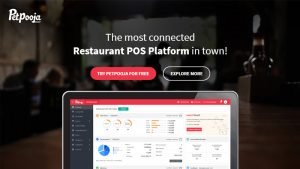3 minutes read
From a Venture to Venture-builder, Connecting the DotsMy three classmates and I (that’s 4 of us) started Digicorp back in January 2004.
We were just a bunch of amateur programmers trying to build some software to solve some problem for some relative. We were chosen for this task since we were the only ones who knew how to code in the respective families (and maybe they thought, we were not earning enough from our day jobs!).
We used to pull all-nights coding, barely making through the day in our respective day jobs. Then one day we decided, enough is enough, quit our jobs and started coding during the day also. That was the start of Digicorp – a story of our venture.
So how have we evolved in these 12 years?
# Phase 1
From 2004 to 2008, we learned to build software as amateur developers and did some project management stuff but that’s not it. We managed clients, marketing, sales, hiring, accounts, finances too! After all, we were the CEOs – Chief Everything Officers!

As a venture, we tried to build software products for our clients (from startups to enterprises). The least amount of bugs kept both, our client and employees happy, and also kept the lights on.
We also tried building our own products during this time and failed miserably.
# Phase 2
Between 2009 to 2013, our roles matured as Product Managers. We had a team of about 75 developers and designers, who could design and code but it would not work if our clients could not create businesses around those products. Of course, we can’t run our clients’ businesses but we can always help them by putting ourselves in their shoes.

So Digicorp further evolved as a venture and helped its clients achieve more with the products we built for them.
We began to understand why we failed with our own products in the first phase.
# Phase 3 (current phase)
In above two phases, we worked with founders hand in hand and saw companies build, fail and flourish from ground up. We realized the difference between coming up with an idea, building a product and building a business around it. It gave us a unique vantage point.

As a venture, we believe we are making a lot of difference in the lives of our clients (mostly startup founders), their users and our employees. But there is a feeling that we can still do much more.
So far, we have helped startup founders create their ventures by providing product development as a service. We have the ideas, experience, connections and resources to build ventures for them. So what if we also create ventures from our own ideas with our own resources? What if we transition from a venture to a venture-builder?
Who are Venture-builders
Venture-builders — also called tech studios, startup factories, or venture production studios — are organizations that build companies using their own ideas and resources.
Unlike incubators and accelerators, we don’t have to take any applications, nor do we have to run any sort of competitive program that culminates in a Demo Day. We pull business ideas from within our own network of resources and assign internal teams to develop them (engineers, designers, and advisors).
We develop many systems, models, or projects at once and then build separate companies around the most promising ones, by assigning operational resources and capital to those portfolio companies.
So far, we have created three products (ReadBoard, BA Apps, and CricHeroes) from our own ideas and resources and have spun off one of them (CricHeroes) as a separate company. We also raised seed funding for it to cement our commitment. It is doing very well so far.
Our journey as a venture-builder has just started and there is a lot to do and a lot to prove (to ourselves).
For a budding entrepreneur reading this, we just have one message:
We never thought we could even build a venture, let alone building a venture-builder! But as Steve Jobs said,
“You can never connect the dots looking forward, you can only do that by looking backward.“
So just keep doing what you are doing and keep getting better at it. But above all,
Be Hungry. Be Foolish.
Kuntal
- Posted on January 2, 2017


